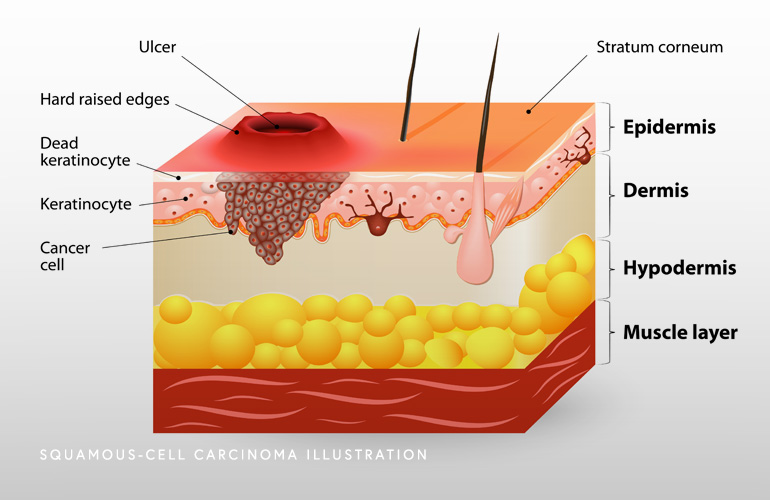Squamous Cell Carcinoma
What is squamous cell carcinoma?
Squamous cell carcinoma (SCC) is the second most common form of skin cancer. Over 1.5 million cases are diagnosed annually in the United States. The risk of squamous cell carcinoma is particularly high in the southern states. Squamous cells, also called keratinocytes, are the ‘brick and mortar’ cells that make up the bulk of the skin covering. Most squamous cell carcinoma are slow growing and not life threatening. However, as squamous cell cancers grow larger and deeper, they have the potential to become more aggressive and potentially spread to the lymph nodes and other organs. While squamous cell carcinoma is far more common than melanoma, nearly as many cancer-related deaths are attributable to squamous cell carcinoma every year. Sun exposure, particularly to ultraviolet (UV) rays, is the primary risk factor for developing squamous cell carcinoma. Early detection and treatment are crucial for effectively managing squamous cell carcinoma and preventing cancer progression.

If you or a loved one has been diagnosed with squamous cell carcinoma, the second most common type of skin cancer, schedule a consultation with a board-certified dermatologist at Apex Skin Center. With renowned dermatologists across Cary, Apex, Holly Springs, and Fuquay-Varina, we offer effective, individualized care for squamous cell carcinoma. Our multiple locations provide you with easy access to advanced treatments and exceptional patient care. Visit us today to learn about your options for managing squamous cell carcinoma.
At a Glance
Dr. Thomas Knackstedt
- Double board certified in dermatology and Mohs Surgery
- Over ten years of experience providing evidence-based care
- Nationally renowned physician leader with numerous publications, lectures, and academic affiliations
- Learn more
